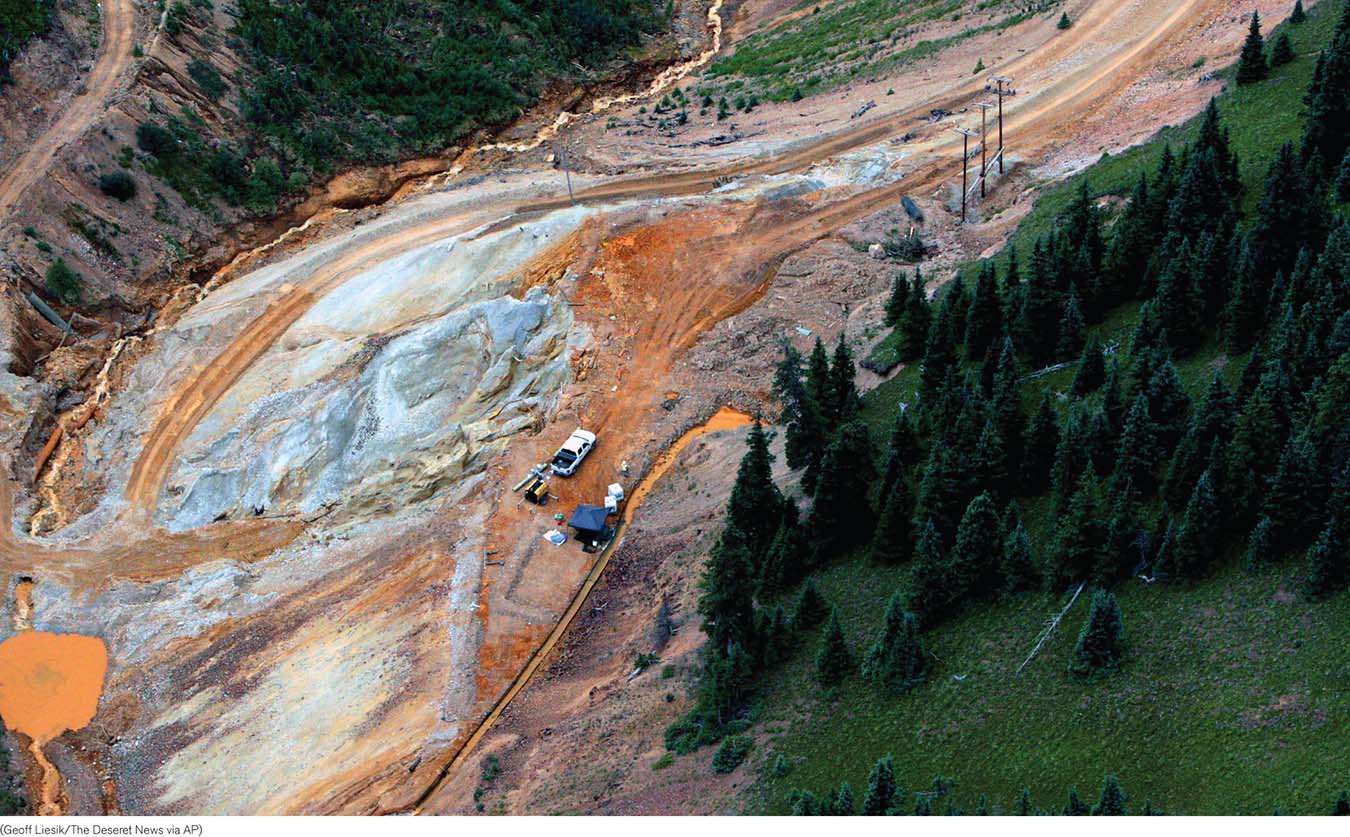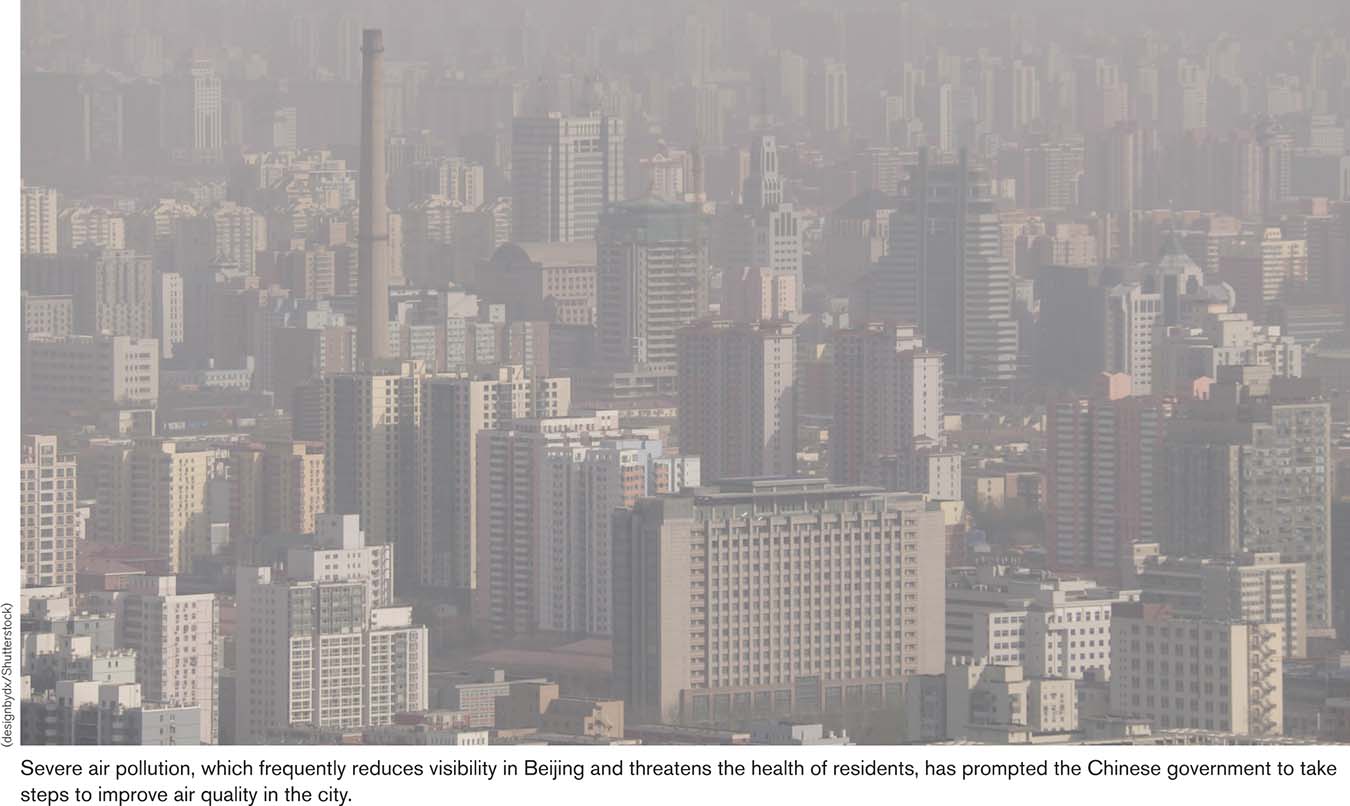Chapter Introduction
CHAPTER 13
Air, Water, and Soil Pollution

Central Question: How can we control and reduce environmental pollution?
 SCIENCE
SCIENCE
Explain the sources of pollution and how they move around the biosphere.
 ISSUES
ISSUES
Describe how air, water, and soil pollution impact biodiversity, ecosystems, and human health.
 SOLUTIONS
SOLUTIONS
Analyze the effectiveness of pollution regulation and other tactics to treat polluted environments.
A Pollution Problem
China’s rapid economic rise has been accompanied by exceptional levels of pollution.

In July 2008 the U.S. embassy in Beijing established a new account on the social media site Twitter. Every hour, @BeijingAir reported two measurements made from air-
China’s rapid growth and lax emission standards have turned its air into a cough-
Most of the @BeijingAir tweets summarized the pollution numbers using the EPA’s Air Quality Index, which ranges from “Good” to “Hazardous.” On November 19, 2010, however, the ozone sensor maxed out at 500, while the PM 2.5 sensor was off the charts with a reading of 562. “Crazy Bad,” the Embassy tweeted. Chinese officials were incensed by these tweets, declaring the readings illegal and unscientific. They later blocked the data from being republished on local websites.
“The great question of the seventies is, shall we surrender to our surroundings, or shall we make our peace with nature and begin to make reparations for the damage we have done to our air, to our land, and to our water.”
President Richard M. Nixon, in his first State of the Union address, 1970
By that time, however, awareness of the problem was so widespread that the Chinese government was forced to address it. In 2013 the government established its own network of monitoring stations and set aside funds to meet ambitious pollution-
Central Question
How can we control and reduce environmental pollution?